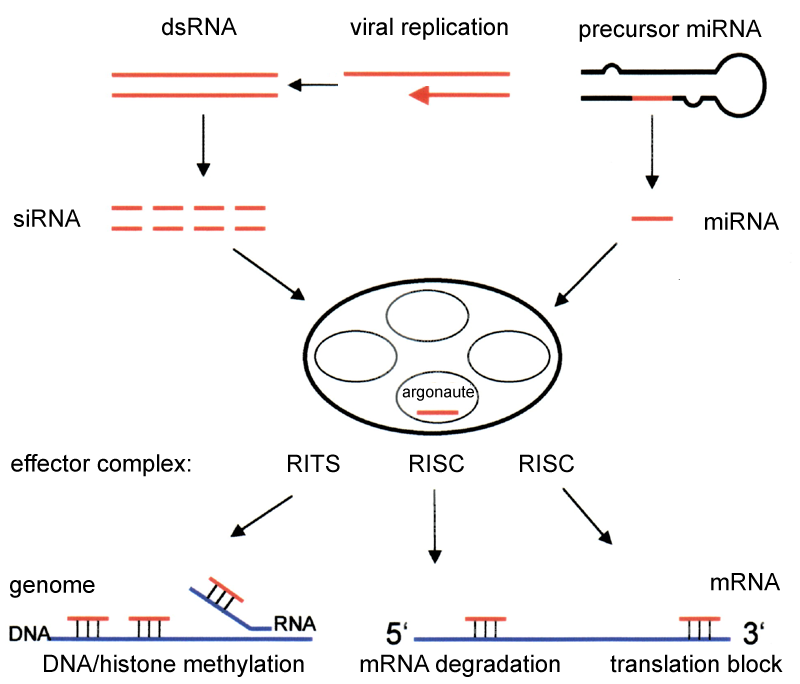 |
| Picture source: Wikipedia |
RNA interference (RNAi) is a mechanism that cells use to regulate gene expression. Small interfering RNAs (siRNAs) are a type of RNA molecule that plays a key role in the RNAi process. SiRNAs are short, double-stranded RNA molecules that are typically 21-23 nucleotides in length.
When a cell is exposed to siRNAs, they are recognized by an enzyme called Dicer, which cuts the siRNA molecules into short pieces called siRNA duplexes. The siRNA duplexes then bind to a protein complex called the RNA-induced silencing complex (RISC), which uses one of the strands of the siRNA duplex as a guide to find and bind to complementary RNA molecules.
Once the RISC complex has bound to a complementary RNA molecule, it uses an enzyme called an RNase to degrade the RNA molecule, preventing it from being translated into a protein. This process is called gene knockdown.
Gene knockdown is often used in research to study the effects of reducing the expression of a specific gene. By using siRNAs to knock down the expression of a gene, researchers can study the effects of reducing the levels of the corresponding protein. This can provide important insights into the function of that gene and the role of the corresponding protein in cell function.
One of the key advantages of using siRNAs for gene knockdown is that they can be designed to target specific genes. This allows researchers to study the effects of reducing the expression of a specific gene, without affecting the expression of other genes.
Additionally, siRNAs can be delivered to cells using a variety of methods, including transfection with vectors such as plasmids or viruses, or by direct injection into cells or tissues. This makes it possible to study the effects of gene knockdown in a wide range of cell types and organisms.
Overall, siRNA-mediated gene knockdown is a powerful tool for studying gene function. By using siRNAs to reduce the expression of specific genes, researchers can gain important insights into the role of those genes in cell function and disease.
